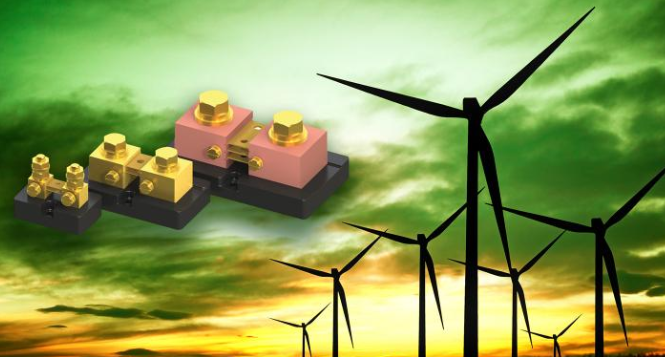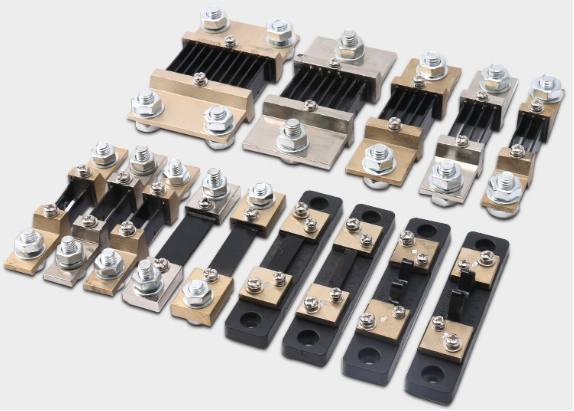Position:Home » Industry News
Renewable Energy Refresh the Ammeter Shunt Resistor
Writer:Microhm Page View:Date:2019-09-17
The rise of renewable energy has put ammeter resistors back in the spotlight. The world has turned to renewable energy in an attempt to wean itself from depleting carbon-based sources. The increase in the number of solar, wind, wave, and tidal power sources has pushed the need for a highly accurate method of measuring current where ammeter shunt resistor FL-2 type from Microhm Electronics are widely used for this purpose. The solution is required for several reasons: to ensure accurate billing, have a more granular level of control, and, perhaps most importantly, to ensure the efficiency of the distributed power system.
There are a few ways to measure current. However, the one most suited for renewable applications looks to be conventional ammeters, using shunt resistors to handle the high currents. Renewable power is not a recent phenomenon. Hydroelectric plants have been popular in some areas for many decades. But for countries trying to switch away from a carbon-based economy, large-scale use of solar and wind power has been the main focus of the new generation of renewable power sources.

Power from these renewable sources differs from conventional sources, such as coal, gas, and nuclear plants. This is because renewables either generate dc power directly, or the power they generate requires some conversion between ac and dc and back. Carbon-based generation inherently produces ac power, which can easily be fed into the grid using substation transformers.
Renewable energy travels a more complex route to the power grid. Photovoltaic panels generate pure dc energy, which must use an inverter to be converted to ac to feed into the grid. Some wind turbines also generate dc, especially the smaller installations seen near homes, farms, and industrial units.
In larger wind-farm installations, it’s possible for the turbines to produce ac power. However, connecting the power to the grid requires the voltage and frequency to be compatible with the grid. In many cases, though, this isn’t the case. The voltage and frequency of the output power is correlated with the rotational speed of the wind turbine, which depends on the wind speed.
One solution is to use a gearbox to sync the turbine speed with mains frequency. The drawback is that this adds complexity to the system, along with extra cost and weight to the overall design. In most cases, it’s preferable to convert the turbine output to dc and then use an inverter to convert it back to ac at the correct frequency and voltage for the grid.

Since almost every renewable power source uses both ac and dc at some point in the power-distribution system, there’s a need to accurately measure both types of power. For ac measurements, current transformers are popular, given that they provide the additional benefit of having galvanic isolation from the measured circuit. But transformers can’t be used for dc power.
There are some measurement tools based on Hall-effect current transducers that can measure both ac and dc current, and they too provide galvanic isolation. The main problem with this type of measurement is the accuracy—it’s normally impossible to get the required accuracy of 0.1% (or better) using Hall-effect current transducers. In this situation, high precision ammeter shunt resistor is come into being.
There are a few ways to measure current. However, the one most suited for renewable applications looks to be conventional ammeters, using shunt resistors to handle the high currents. Renewable power is not a recent phenomenon. Hydroelectric plants have been popular in some areas for many decades. But for countries trying to switch away from a carbon-based economy, large-scale use of solar and wind power has been the main focus of the new generation of renewable power sources.

Power from these renewable sources differs from conventional sources, such as coal, gas, and nuclear plants. This is because renewables either generate dc power directly, or the power they generate requires some conversion between ac and dc and back. Carbon-based generation inherently produces ac power, which can easily be fed into the grid using substation transformers.
Renewable energy travels a more complex route to the power grid. Photovoltaic panels generate pure dc energy, which must use an inverter to be converted to ac to feed into the grid. Some wind turbines also generate dc, especially the smaller installations seen near homes, farms, and industrial units.
In larger wind-farm installations, it’s possible for the turbines to produce ac power. However, connecting the power to the grid requires the voltage and frequency to be compatible with the grid. In many cases, though, this isn’t the case. The voltage and frequency of the output power is correlated with the rotational speed of the wind turbine, which depends on the wind speed.
One solution is to use a gearbox to sync the turbine speed with mains frequency. The drawback is that this adds complexity to the system, along with extra cost and weight to the overall design. In most cases, it’s preferable to convert the turbine output to dc and then use an inverter to convert it back to ac at the correct frequency and voltage for the grid.

Since almost every renewable power source uses both ac and dc at some point in the power-distribution system, there’s a need to accurately measure both types of power. For ac measurements, current transformers are popular, given that they provide the additional benefit of having galvanic isolation from the measured circuit. But transformers can’t be used for dc power.
There are some measurement tools based on Hall-effect current transducers that can measure both ac and dc current, and they too provide galvanic isolation. The main problem with this type of measurement is the accuracy—it’s normally impossible to get the required accuracy of 0.1% (or better) using Hall-effect current transducers. In this situation, high precision ammeter shunt resistor is come into being.
Keywords:
Latest News
- Resistor's role in measuring and correcting LED,,,
- Single through-hole resistors' characteristics ,,,
- Why shunt resistors for current sense applicati,,,
- Metal-film resistors with small size, high resi,,,
- 36W High-Current Shunt Resistors MMS8420,,,
- 1W Surface Mount Resistor MPR1206,,,
- An Overview of Microhm Electronics' Resistor Pr,,,
- More anti-sulfur resistors used in harsh envir,,,
- Resistance changes with temperature,,,
- 140W TO247 High Power Heatsinkable Resistor,,,
- MMS5930 is ideal for current sensing in industr,,,
- Shunt resistors selection for engineers' design,,,
- Considerations for choosing precision resistors,,,
- Ceramic Encased Cement Resistors NWH Series for,,,
- Resistors for Passive Balancing in Battery-Pow,,,
Hot Articles
- Microhm will take part in 10th Automotive World,,,
- Thanks for Visiting Microhm's Booth E5-5706 in ,,,
- Resistors in Short Supply: Blame Cars,,,
- New lunch: High Power Precision Shunt Resistor,,,,
- How to Test a Resistor,,,
- Innovative Technology, Future Electric: Electri,,,
- What is Precision Resistors?,,,
- SMD Resistors Sizes and Packages,,,
- The Construction and Features of Metal Film Res,,,
- What is a TO-220 Resisor?,,,
- Hot Selling Products: Precision Shunt Resistors,,,
- How to Calculate the Equivalent Resistance Valu,,,
- What is a Fixed Resistor?,,,
- Resistors in LED Circuits,,,
- Resistors Types and Materials Overview,,,
Resistance applications
- Carbon Film Resistors' Features and Application,,,
- Precision Resistors' Construction and TCR,,,
- The Measurement Accuracy of Automotive Shunt is,,,
- BMS for New Energy Vehicle,,,
- The Four Important Functions of Alloy Resistors,,,
- Difference Between High Precision Resistors and,,,
- Miniature future for passive electronic compone,,,
- Industrial Roberts Applied to Solar Photovoltai,,,
- Heater Blower Motor Resistor in Air Conditioner,,,
- Shunt Resistor MMS8420 for High Current Stable ,,,
- The Main Application for High Precision and Low,,,
- Urbanization Development Bringing the Transform,,,
- Select the Right Resistor for Harmonic Filterin,,,
- Surface Mount Resistor's Size and Package ,,,
- Why Zero-Ohm Resistors?,,,
